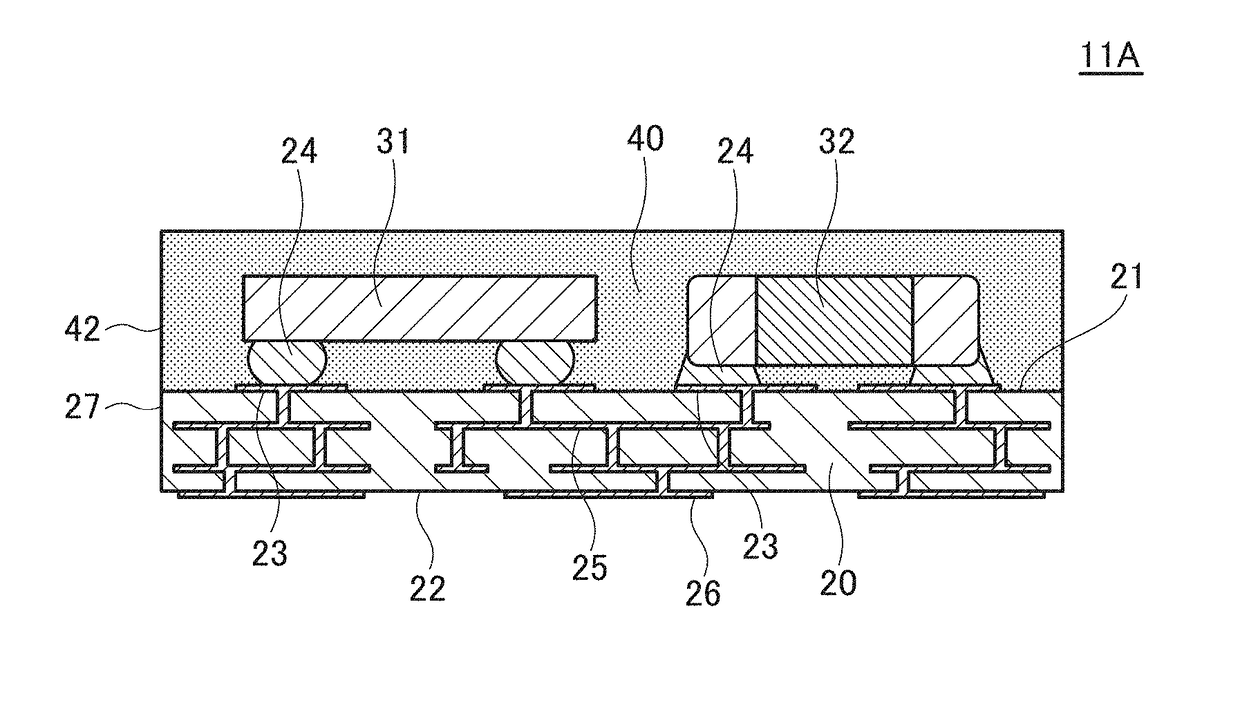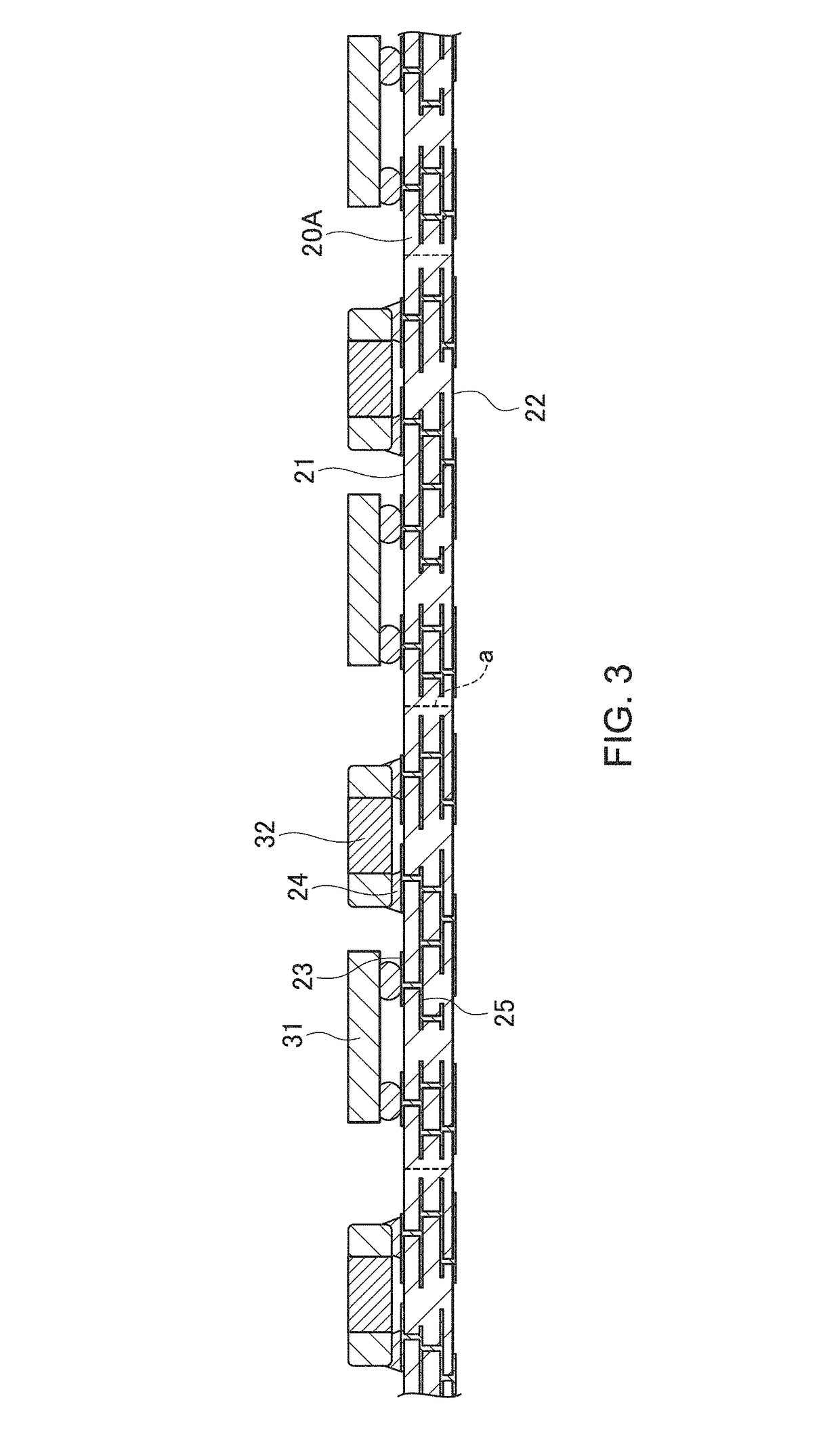Composite magnetic sealing material and electronic circuit package using the same
- Summary
- Abstract
- Description
- Claims
- Application Information
AI Technical Summary
Benefits of technology
Problems solved by technology
Method used
Image
Examples
first embodiment
[0066]FIG. 1 is a cross-sectional view illustrating a configuration of an electronic circuit package 11A according to the first embodiment of the present invention.
[0067]As illustrated in FIG. 1, the electronic circuit package 11A according to the present embodiment includes a substrate 20, a plurality of electronic components 31 and 32 mounted on the substrate 20, and a magnetic mold resin 40 covering a front surface 21 of the substrate 20 so as to embed the electronic components 31 and 32.
[0068]Although the type of the electronic circuit package 11A according to the present embodiment is not especially limited, examples thereof include a high-frequency module handling a high-frequency signal, a power supply module performing power supply control, an SIP (System-In-Package) having a 2.5D structure or a 3D structure, and a semiconductor package for radio communication or digital circuit. Although only two electronic components 31 and 32 are illustrated in FIG. 1, more electronic com...
second embodiment
[0113]FIG. 15 is a cross-sectional view illustrating a configuration of an electronic circuit package 12A according to the second embodiment of the present invention.
[0114]As illustrated in FIG. 15, an electronic circuit package 12A according to the present embodiment differs from the electronic circuit package 11A according to the first embodiment illustrated in FIG. 1 in that a planar size of the magnetic mold resin 40 is slightly smaller than a planar size of the substrate 20 and, therefore, an outer peripheral portion of the front surface 21 of the substrate 20 is exposed from the magnetic mold resin 40. Other configurations are the same as those of the electronic circuit package 11A according to the first embodiment. Thus, in FIG. 15, the same reference numerals are given to the same elements as in FIG. 1, and repetitive descriptions will be omitted.
[0115]As exemplified by the electronic circuit package 12A according to the present embodiment, it is not essential in the present...
third embodiment
[0120]FIG. 19 is a cross-sectional view illustrating a configuration of an electronic circuit package 13A according to the third embodiment of the present invention.
[0121]As illustrated in FIG. 19, the electronic circuit package 13A according to the present embodiment differs from the electronic circuit package 11A in that it further includes a metal film 60 that covers an upper surface 41 and a side surface 42 of the magnetic mold resin 40 and covers a side surface 27 of the substrate 20. Out of the internal wirings 25 illustrated in FIG. 19, internal wirings 25G are power supply patterns. A part of the power supply patterns 25G is exposed from the substrate 20 on the side surface 27. The power supply patterns 25G are typically ground patterns to which a ground potential is to be applied; however, it is not limited to the ground patterns as long as the power supply patterns 25G are a pattern to which a fixed potential is to be applied. Other configurations are the same as those of ...
PUM
 Login to View More
Login to View More Abstract
Description
Claims
Application Information
 Login to View More
Login to View More - R&D
- Intellectual Property
- Life Sciences
- Materials
- Tech Scout
- Unparalleled Data Quality
- Higher Quality Content
- 60% Fewer Hallucinations
Browse by: Latest US Patents, China's latest patents, Technical Efficacy Thesaurus, Application Domain, Technology Topic, Popular Technical Reports.
© 2025 PatSnap. All rights reserved.Legal|Privacy policy|Modern Slavery Act Transparency Statement|Sitemap|About US| Contact US: help@patsnap.com



